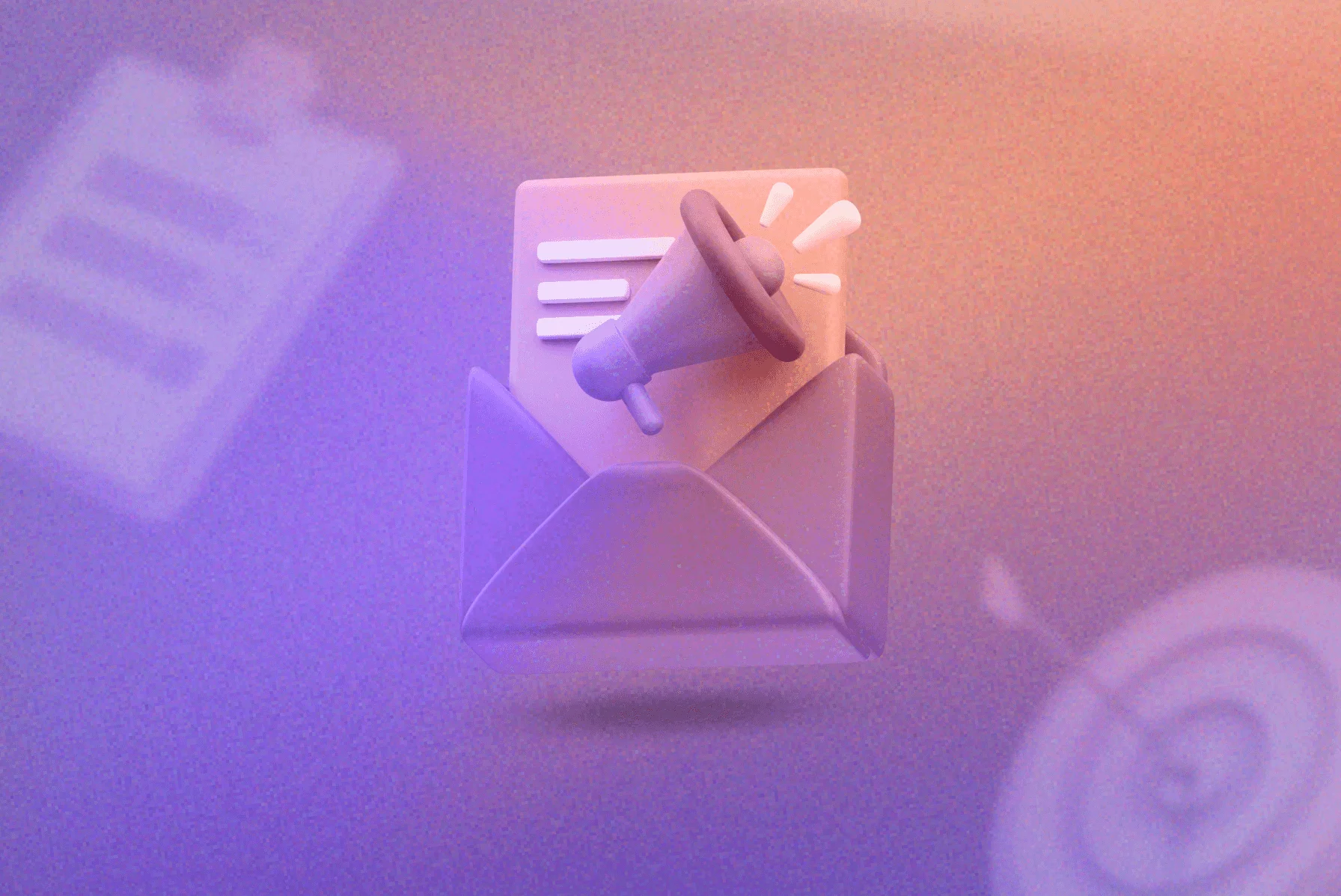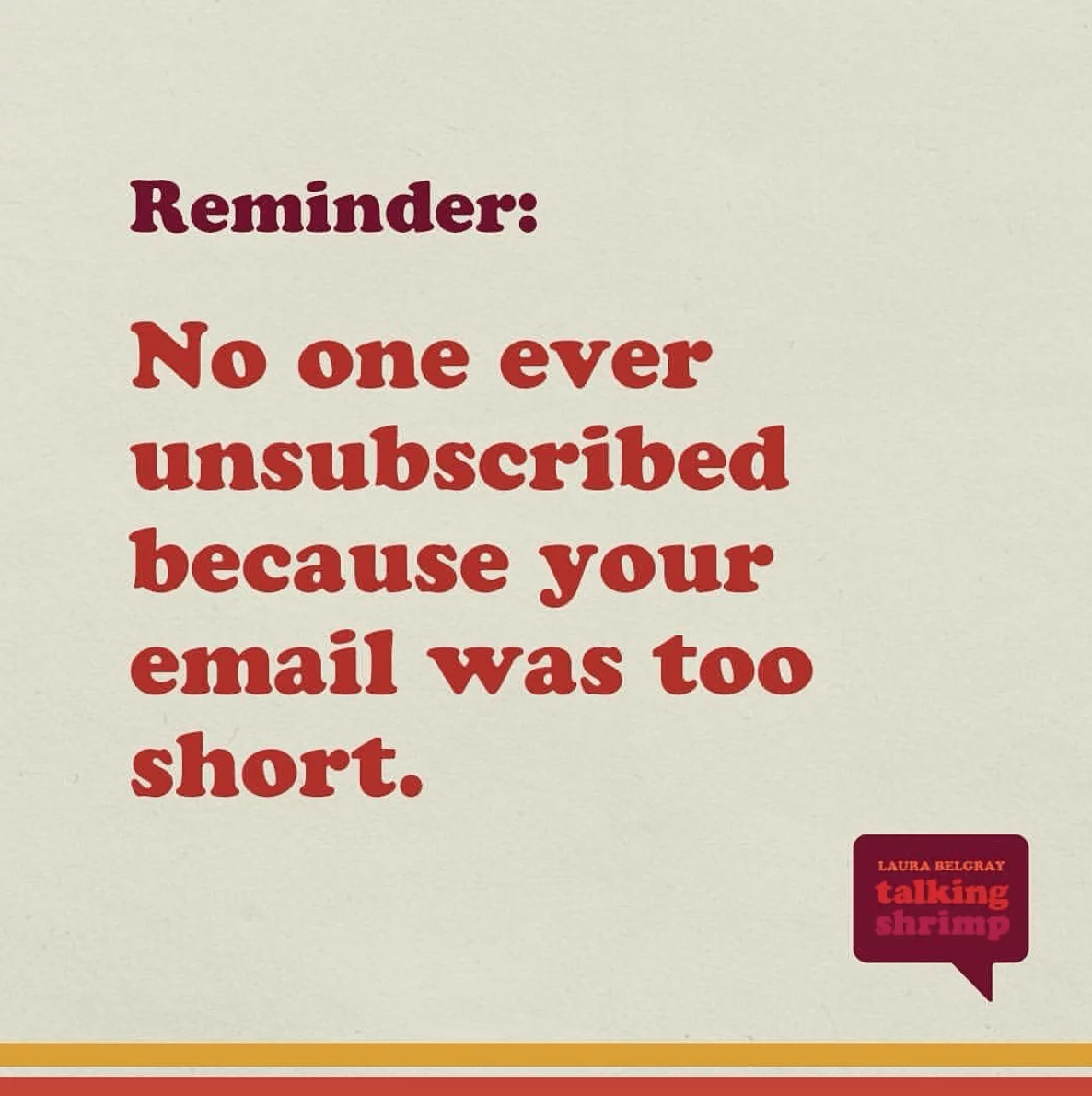Email marketing is one of the oldest and best tricks in the communication playbook, and newsletters are an excellent tool for brand awareness, audience engagement, and lead nurturing. But newsletter planning is challenging. Coming up with and delivering fresh ideas consistently may feel like an exhausting marathon when you only trained for a sprint. It’s more than a creative challenge — it’s a critical component of your overall marketing campaign plan.
If you feel the strain of executing your email marketing strategy or are just starting to work on one and want to do things right, read on. I’ll share the best practices, ideas, and resources for coming up with content ideas, creating an actionable newsletter plan and seeing it through.
Contents
What is newsletter planning?
Newsletter planning involves creating a structured approach to designing, creating, and distributing newsletters. It is a systematic process that helps you organize the tools and resources required for newsletter content creation, scheduling, and audience targeting. Whether sending educational pieces, invites to events, company updates, or promotions, planning is an essential step to ensure consistency and achieve communication goals.
Why is planning a newsletter so important?
The importance of a newsletter as part of your marketing strategy cannot be overstated. 59% of B2B marketers say email marketing campaigns are their main channel for revenue generation, and 80% of B2C professionals believe that newsletters increase customer retention, according to Optinmonster.
But results don’t come with sporadic, poorly executed emails or with a flood of messages sent over a few days. You must build awareness and trust with your target audience. And that, my dears, takes time and strategic planning.
Whether growing your own brand, working with multiple clients, or managing a marketing team, here’s why you must make newsletter planning a priority:
- Increased content efficiency
By strategically planning your newsletters, you can optimize content creation processes, ensuring a balance between content quality and email frequency. This balance is essential to keeping subscribers interested in reading your content at a pace they are comfortable with.
- Improved consistency
Planning lets you establish a newsletter schedule with a set delivery rhythm that fits business and audience needs. Consistency is paramount to getting results and improves your brand’s reliability and trustworthiness.
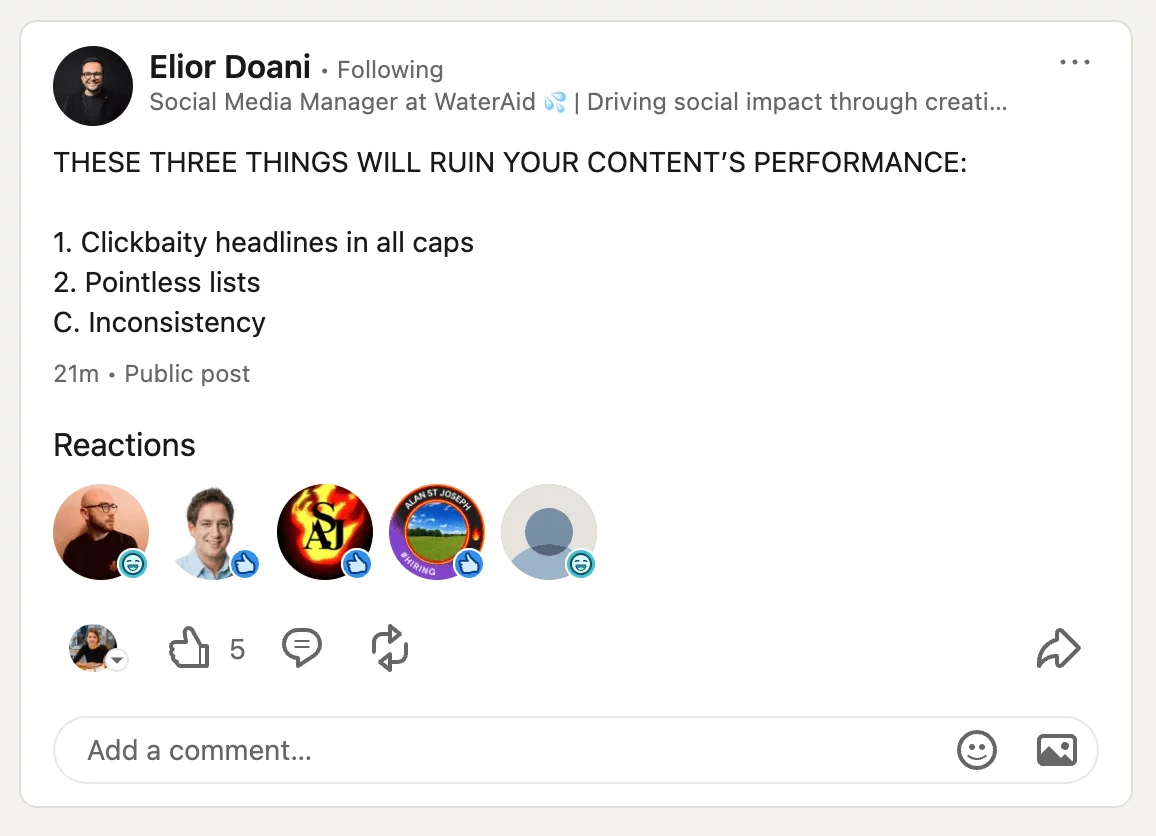
Source: LinkedIn
- Better audience engagement
Newsletter planning gives you time to research the target audience and tailor content to its interests and preferences. By consistently delivering relevant content, you can create stronger connections and encourage interaction with your brand.
- Alignment with marketing and business goals
Newsletters should directly support your broader communication objectives. Planning lets you align each newsletter or email sequence with specific goals, such as driving website traffic, nurturing leads, or maximizing sales for a specific campaign.
- Resource allocation
Marketing is a juggling exercise. With so many platforms and channels to cover, it’s easy to drop the ball. Planning email campaigns helps you understand what resources you need and when so you can better balance your efforts and minimize the risk of running out of time, money, or energy.
Are you on board and ready to go? Let’s go through the most important steps of newsletter planning.
How do you create a newsletter plan?
Planning a newsletter schedule might take some effort at first, but it will save a lot of time in the long run and improve overall results. Follow the roadmap below to get everyone working together and keep the valuable content flow going.
Step 1: Start with goal setting
Every plan should start with why. Just ask Simon Sinek if you don’t believe me.
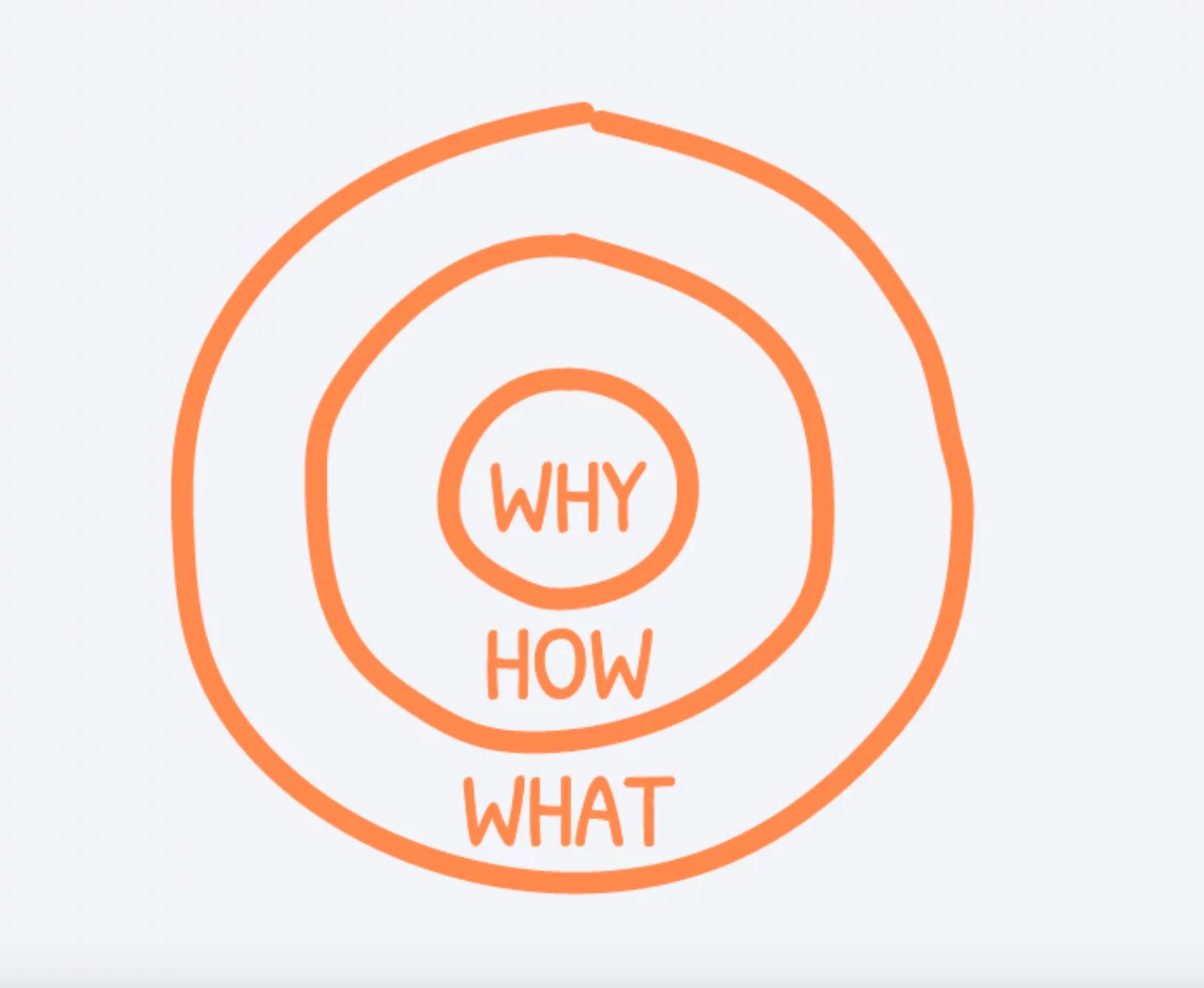
Source: Golden Circle for Organizations
Set clear goals aligned with your marketing and business objectives for your email marketing campaigns so you can move the needle for your organization. Goals can include getting brand awareness, educating the audience about products and services, generating leads, improving customer loyalty, gathering feedback for the business, etc.
Email marketing can support one or various goals. Newsletter planning lets you map out emails and connect them to various objectives.
Step 2: Audience analysis
Whether you already have a subscriber list or are planning to build one, audience analysis is crucial for creating valuable content.
Look at the following:
- Demographic data: age, gender, location, and other data relevant to your business, such as education level, professional status, etc.
- Psychographic data: interests, values, and behaviors.
- Email engagement metrics: open rates and click-through rates for previous newsletters.
- Feedback and survey responses. If not available, consider asking for feedback or sending out a survey to get to know your audience better (whether through email or other communication channels where your brand is present).
Based on this data, you can develop a newsletter strategy that meets audience needs and solves their problems. You can also segment your list to send more personalized messages and find the optimal email frequency for different groups.
Step 3: Content ideation for engagement and relevant topics
Let’s say you decide to send a weekly newsletter to your intended audience. Don’t wait for the day before the newsletter is due to come up with a topic. Instead, create a newsletter content calendar with diverse content ideas that balance subscriber interests with your business goals.
Here are potential topics to include:
- Answers to frequent questions your clients have
- Solutions to pain points and challenges you identified in the audience analysis
- Teasers for new blog posts, e-books, or other content you’re creating
- Invitations to webinars and other events
- Exclusive content or offers to make subscribers feel valued
- Information about products and services
- Anniversary messages and seasonal greetings
Keep a running list of ideas to choose from in a shared location — using a reliable content planner can come in very handy here.
When planning, ensure diversity of topics and types of newsletters. For example, sending seven promotional emails in a row might be annoying. Alternate educational or entertaining content with offers and product updates.
Easily organize content and spot what’s missing or what’s too much using a content calendar. Here’s an example of a calendar I created using Planable to provide anyone on the team with a clear view of upcoming content, frequency of publication, topics, and distribution channels.
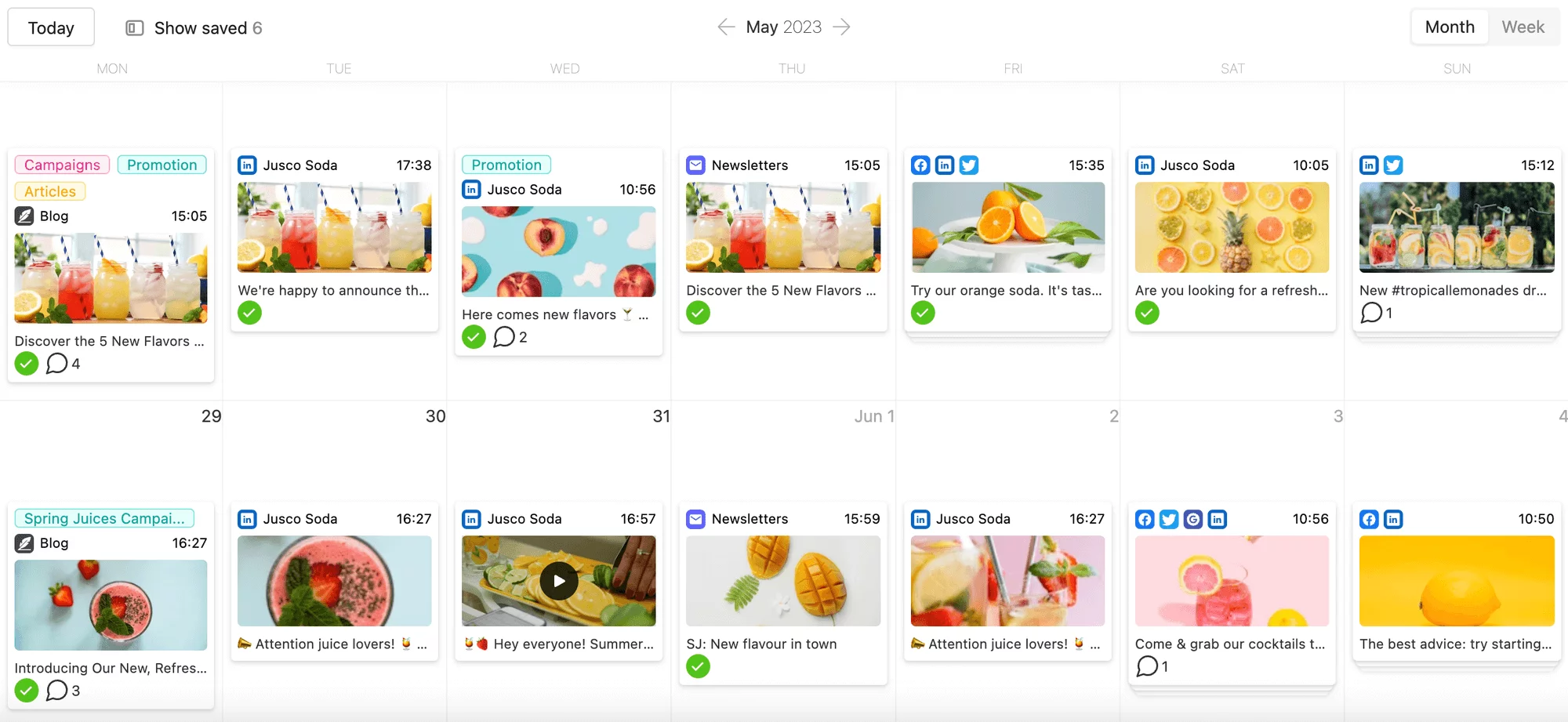
Content calendar with newsletters, blogs and social posts in Planable
Step 4: Content scheduling
Schedule content to ensure consistency and balance business objectives and subscribers’ needs.
According to Campaign Monitor, it’s best to send newsletters no more than twice a week but no less than once a month. Weekdays are better than weekends, and Mondays get the best open rates, though not by far compared to other days.
Refine your newsletter strategy by keeping an eye on benchmarks, analyzing the open rates of your email campaigns, and asking subscribers about their preferences.
Step 5: The design plays an important factor
Newsletter design is essential for email readability and engagement. Here are a few best practices to keep in mind:
- Have a clean, uncluttered layout that puts content in the spotlight.
- Keep content short, to the point, and relevant. It’s not about the amount of information you can include but how relevant and useful it is.
Source: @LauraBelgray
- Use high-quality photos, but beware of email size. Large sizes can trigger email deliverability problems.
- Include a catchy call to action. It should stand out but still be coherent with the rest of the design.
- Ensure consistency with brand guidelines: colors, logos, images, fonts, messaging, etc.
Work with your team to create different templates for various newsletter types, such as educational emails, special offers, abandoned cart reminders, etc. These will help you maintain a coherent style while saving time with newsletter creation.
Step 6: Approval process before sending the newsletter
Set up a transparent review process for the newsletter to avoid bottlenecks that can delay publishing.
A social media management tool like Planable can help you streamline collaboration and approval workflows for your newsletters as well as your other content. Create the newsletter in Planable, tag people in the comments, and get real-time feedback.
With the multi-layer approval process, you can provide visibility to different roles at various steps of the process, as needed. This makes the entire process clearer and more efficient.
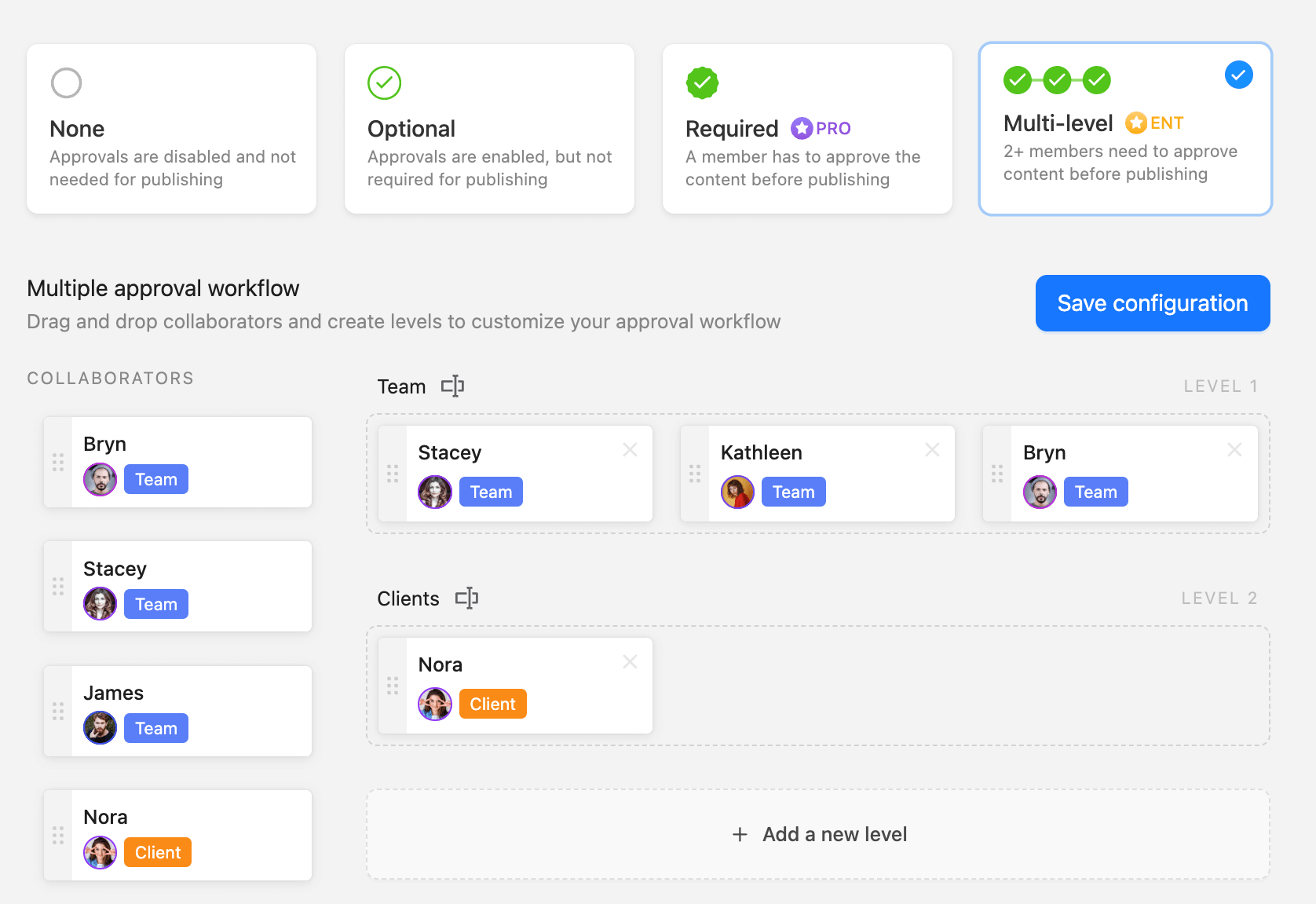
Multiple levels of approval in Planable
Step 7: Analytics and optimization
Tracking results and improving based on observations is an essential part of any successful marketing campaign.
Select key performance indicators and track them over time. Look at engagement metrics, such as open and click-through rates, unsubscribe rates, list growth, or conversion rates. Choose KPIs that are relevant to your email marketing goals.
In addition to quantitative metrics, send periodic surveys or feedback forms to gauge how happy people are with your content and understand what you can improve.
Use learnings to optimize your campaigns and ensure that newsletters contribute to your marketing ROI.
How do you structure a good newsletter?
The key components of a well-structured newsletter have remained more or less unchanged over time, and they include the following:
- Subject line
This is probably the most important element of your newsletter because it determines whether people ignore your email or click on it. Write a clear, concise, captivating subject line that makes people curious to read more — while avoiding any type of clickbait or false promises.
- Header
Use the header to give your newsletter personality. Highlight branding elements and any information that readers should see first, such as a special discount code or a beautiful image of your newly launched product.
- Body content
Break content into short paragraphs and balance text and visuals throughout the newsletter to enhance readability.
- Calls-to-action (CTAs)
CTAs are essential to maximizing email engagement and conversion rates. An efficient CTA is short, compelling, and easily visible to readers. Place the CTA at the end of the newsletter or a few times throughout if you’re sending a longer one.
- Footer
Footers include required information, such as legal address and an unsubscribe option. You can also include links to the website and social platforms, a slogan or unique selling proposition, or a forwarding option to increase engagement.
Planable’s content collaboration features can help you structure and optimize emails and ensure they are on-brand by allowing everyone from copywriters, designers, and email marketers to work together in real time. The platform makes it easy to visualize the newsletter, get input and approvals, and specify a send date in the newsletter content plan.
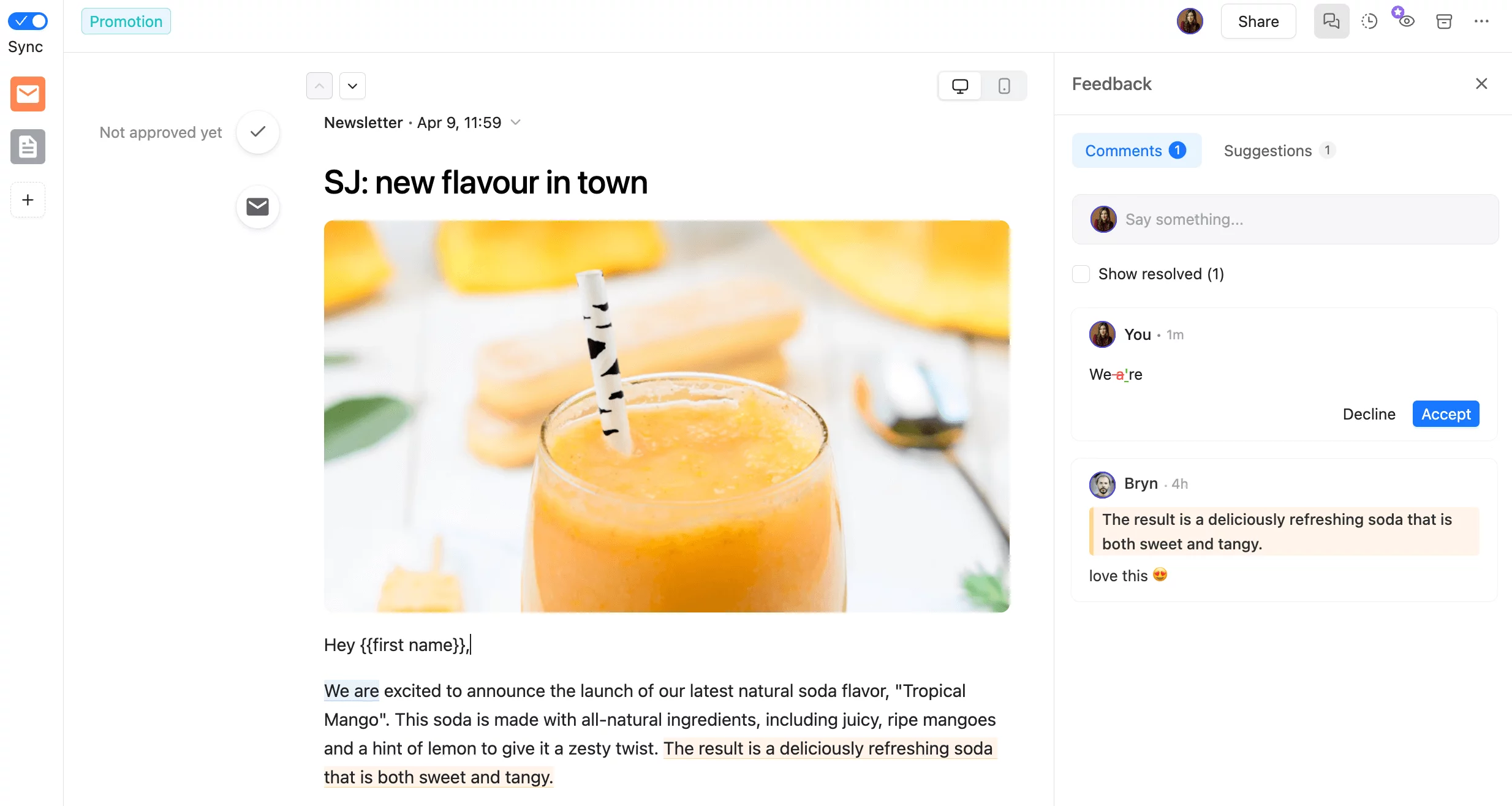
Collaboration on a newsletter in Planable
How do you write content that converts?
To write content that converts, go back to your audience research. Craft messages that address your subscribers’ needs and resonate with their desires. Answer burning questions and be the helping hand they need to navigate their challenges.
Strive to make every element of your newsletter compelling, from headline to body copy and CTAs. Include clear benefits, emotional appeals, and impactful visuals aligned with your brand image and voice. Incorporate examples, case studies, or storytelling elements to illustrate the effectiveness of your products and services.
By focusing on relevance and usefulness, you will create content that captures attention and motivates readers to act.
How do you plan content for a monthly email newsletter?
When creating a monthly newsletter plan, balance is key. Use a newsletter content planner to ensure consistency and alternate informative and promotional emails to ensure subscribers don’t get bored and find value in your overall communication.
Here are a few ideas to help you with your newsletter content planning:
- Have a theme for each month and develop different types of content that support that topic.
- Develop a monthly structure for the newsletter plan, which you can easily replicate.
- Work with newsletter templates to simplify the creation process.
- Use a newsletter content planner to streamline ideation, collaboration, writing, design, and approval.
Planable’s Universal Content feature facilitates newsletter content planning. It enables seamless teamwork, including sharing ideas, providing feedback, and working collaboratively on executing the strategy. With Planable, you have everything you need to craft newsletter content that is compelling, engaging, and on-brand.
Last but not least, by leveraging Planable’s calendar, you can visualize and organize content, ensuring not only consistency but also alignment with the marketing goals you set at the beginning of the process.
Newsletter planning template: Create your content in Planable
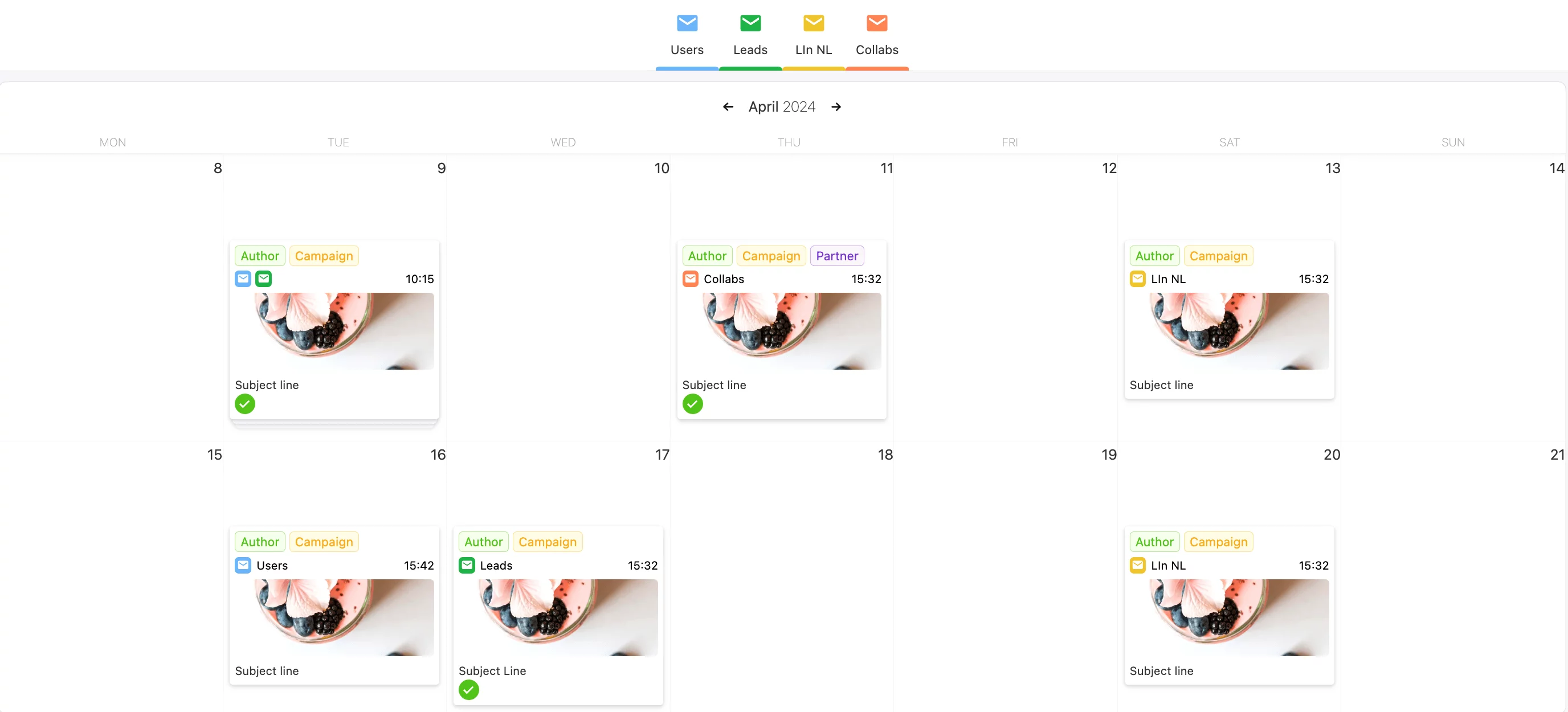
Newsletter content plan template in Planable
To ensure your newsletter content strategy is on point, you should be able to quickly spot the planned content for each channel. In Planable, you can create custom channels and view everything in a content calendar, or each channel as a feed.
Use labels to quickly identify who’s the author responsible for each piece of content, ongoing campaigns, and even audience segments if you use specific targeting within each channel.
If you’re sponsoring third-party newsletters or working on any type of collabs, I suggest you include these as well in your newsletter planning calendar. This way, you keep track of team workload as well and make sure everything is ready on time.
When you plan to same email to different channels, it’s easy to create content in sync in Planable. And once a piece is approved, it gets the green checkmark in the calendar as well, so you always have a bird’s eye view of the progress.
FAQs about newsletter planning
What are the three main components of a newsletter?
The three main components of a newsletter are the subject line, body content, and footer.
How long should a newsletter be?
A newsletter should be long enough to convey the intended message but ideally under 20 lines of text or 200 words. Shorter emails tend to be more efficient and engaging, so aim to be concise and relevant.
Why is newsletter design important?
Newsletter design is essential to projecting a professional image, ensuring brand consistency, and enhancing readability and engagement.
Final thoughts about newsletter planning
Newsletters are an important part of any content strategy as they can help brands achieve multiple communication goals. However, email marketing efficiency depends on content relevance and publishing consistency, so newsletter planning becomes essential to execute the strategy successfully in the long run. Try Planable for free to easily brainstorm ideas, create newsletters, and set up a calendar that keeps the team on track and subscribers engaged.



